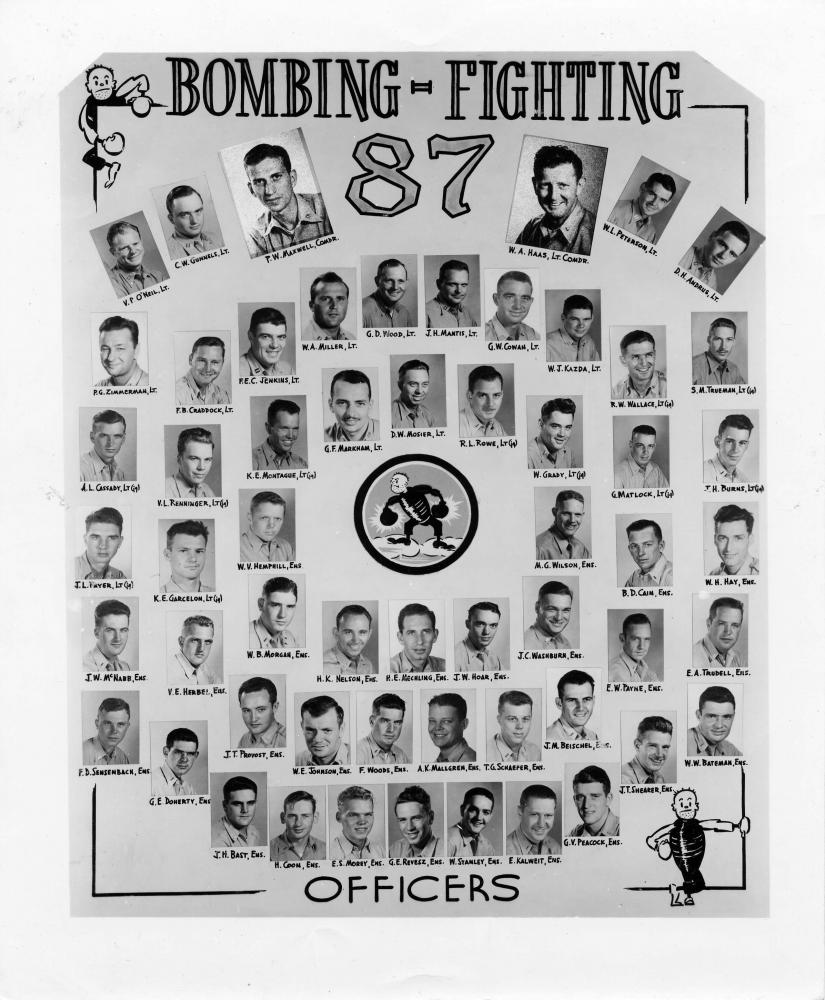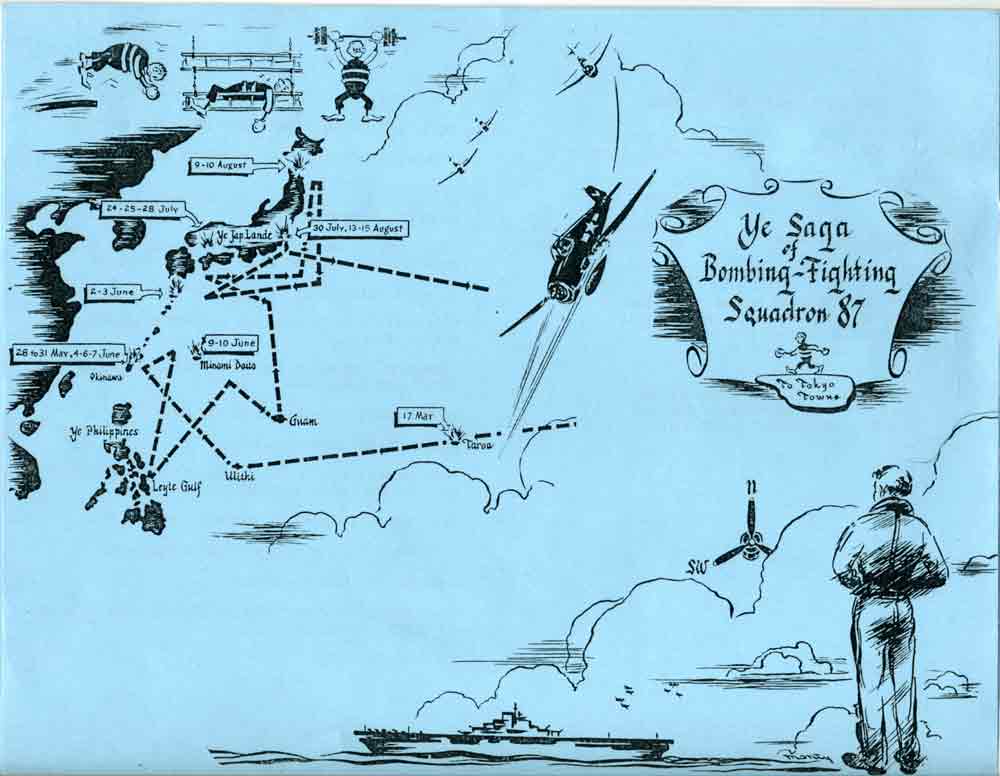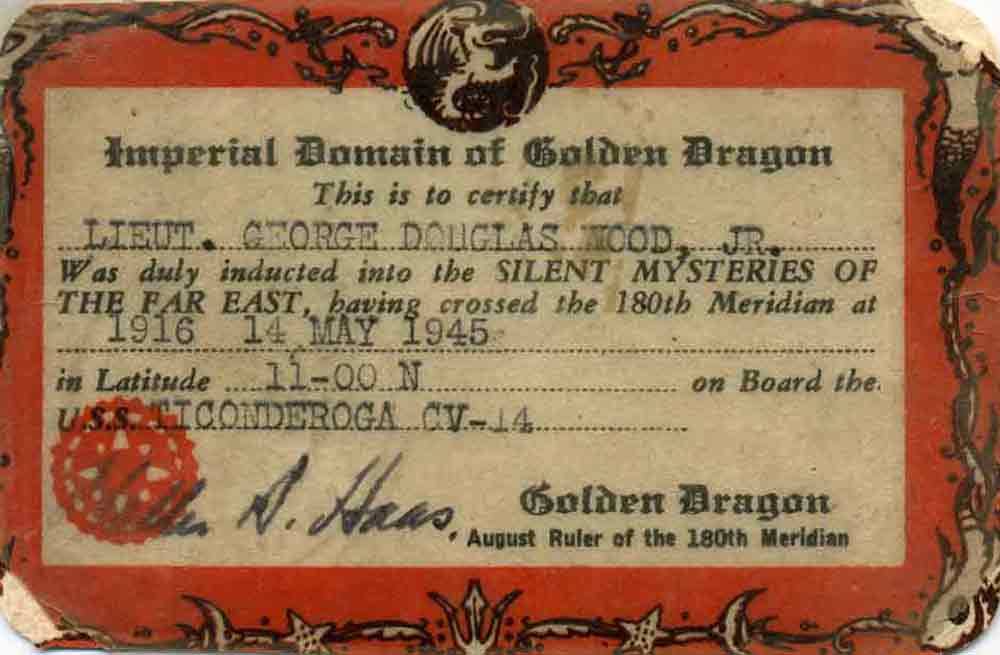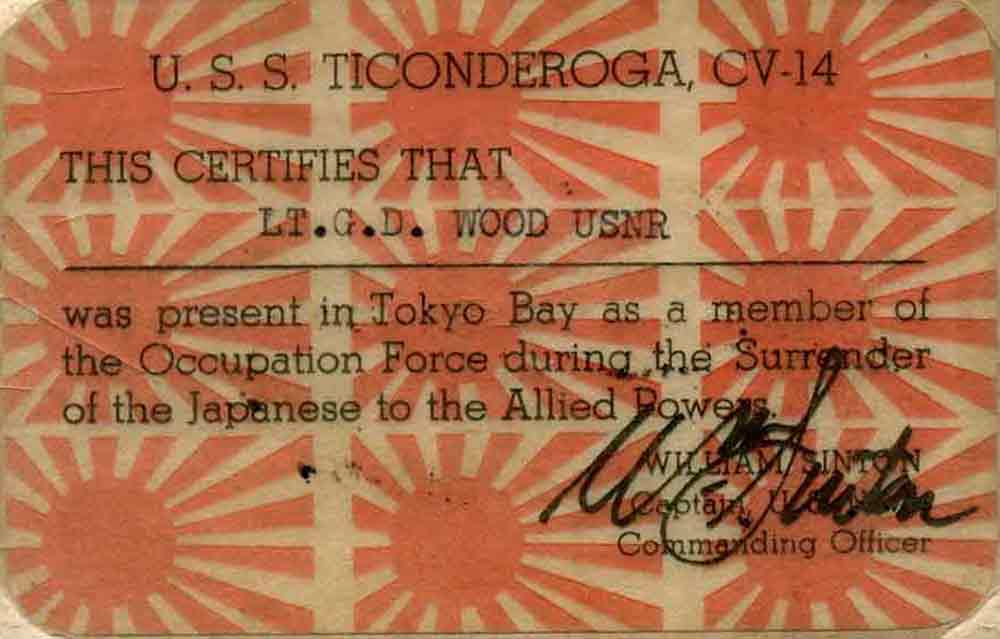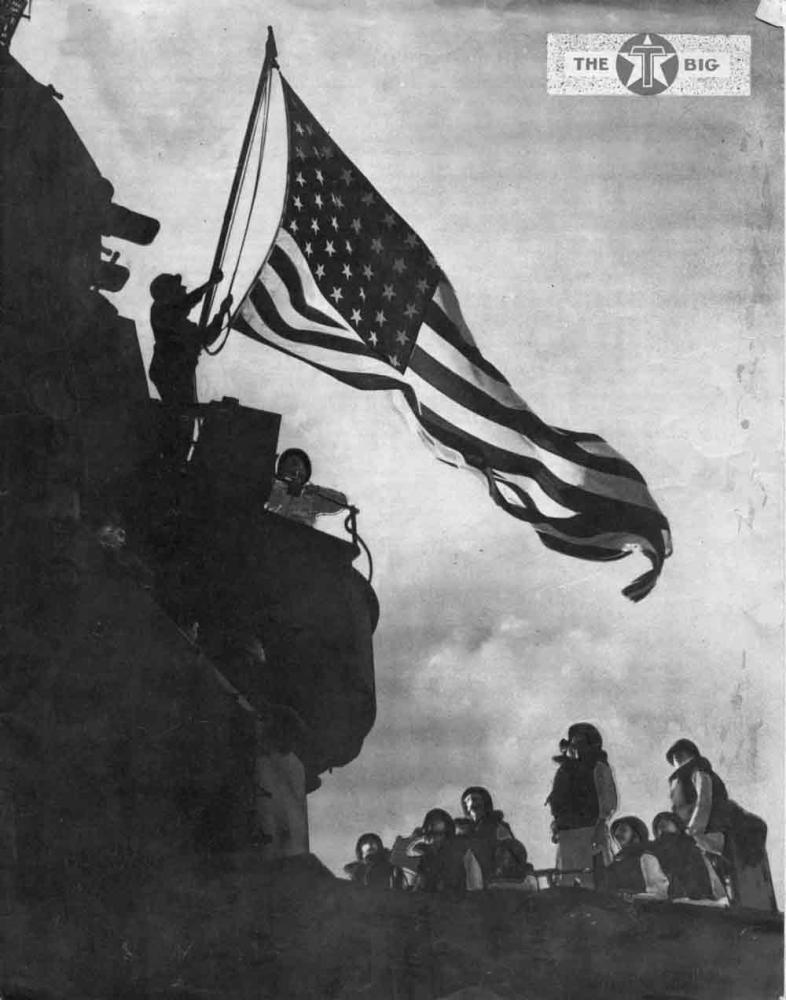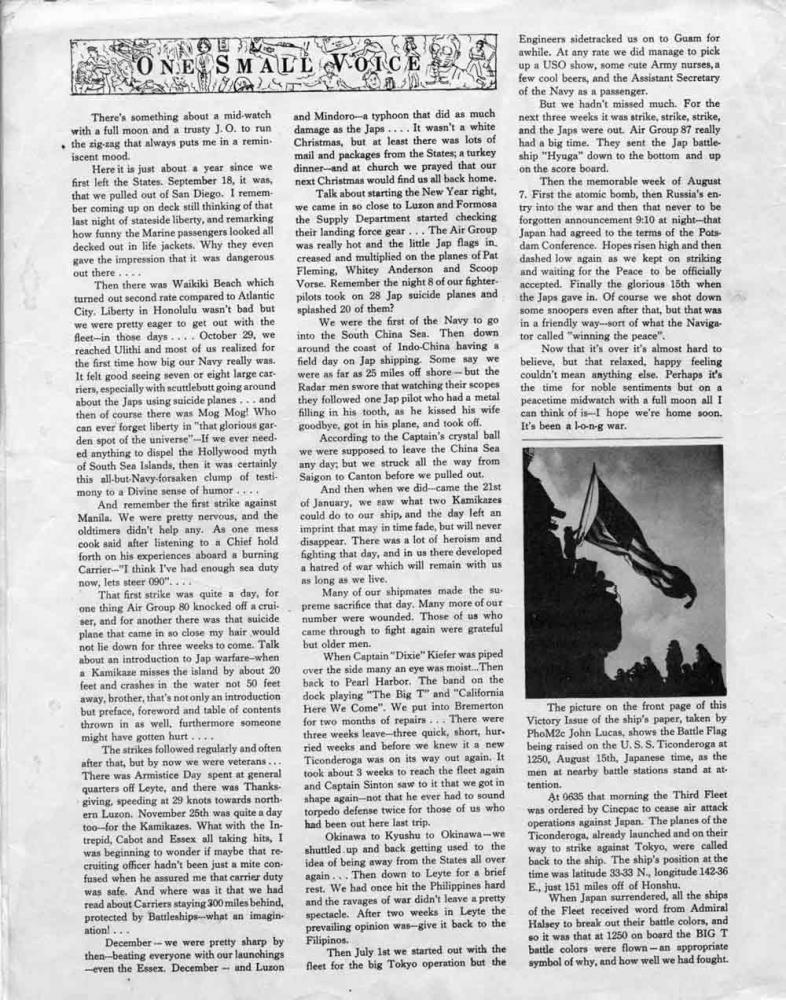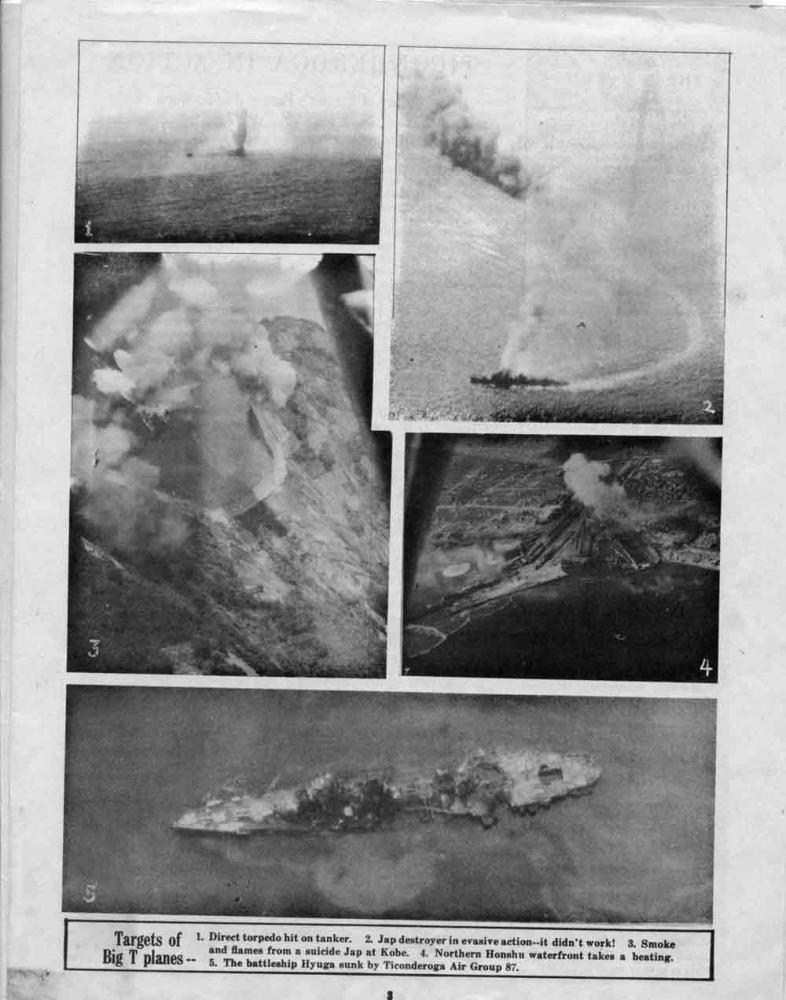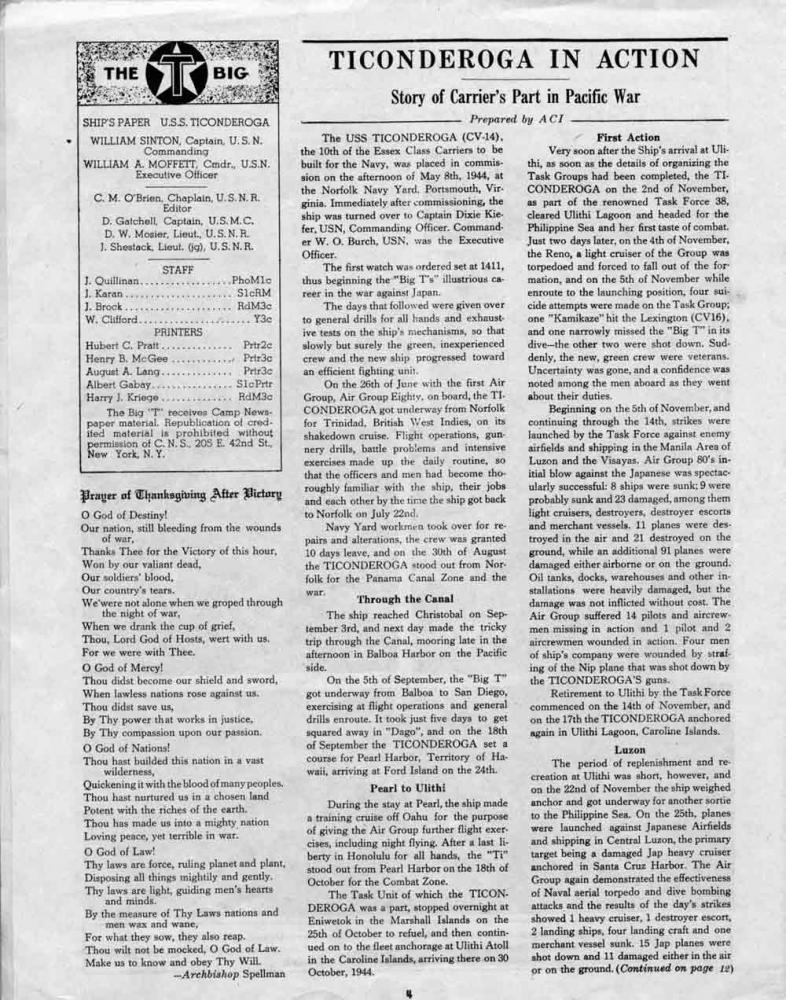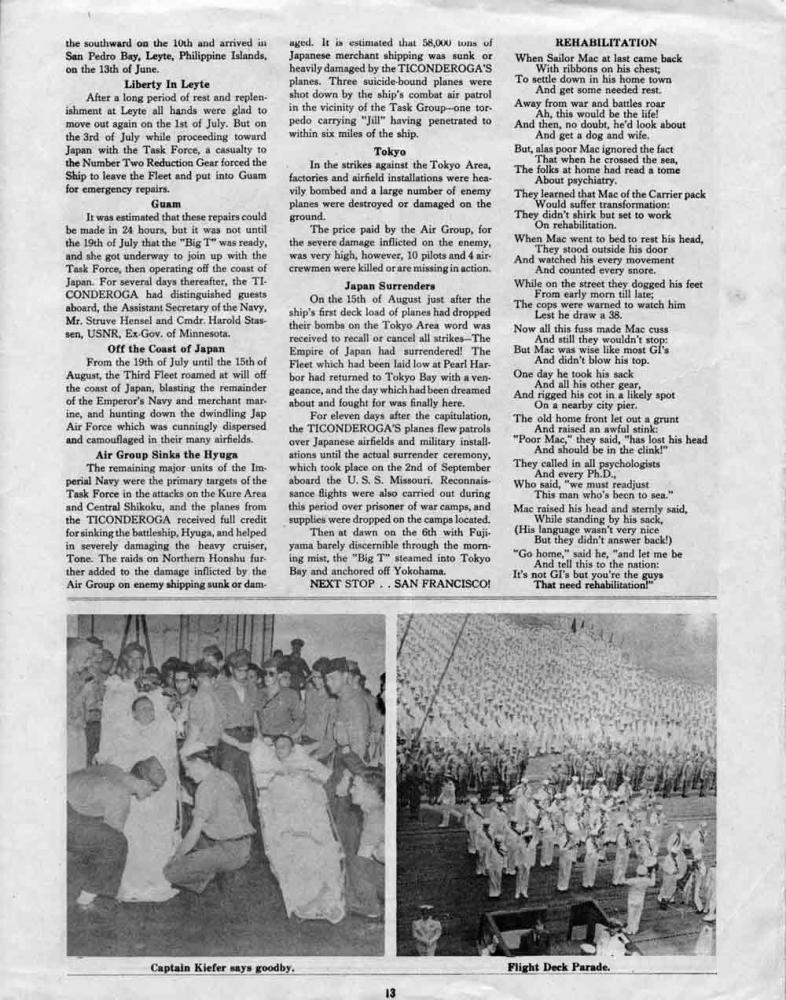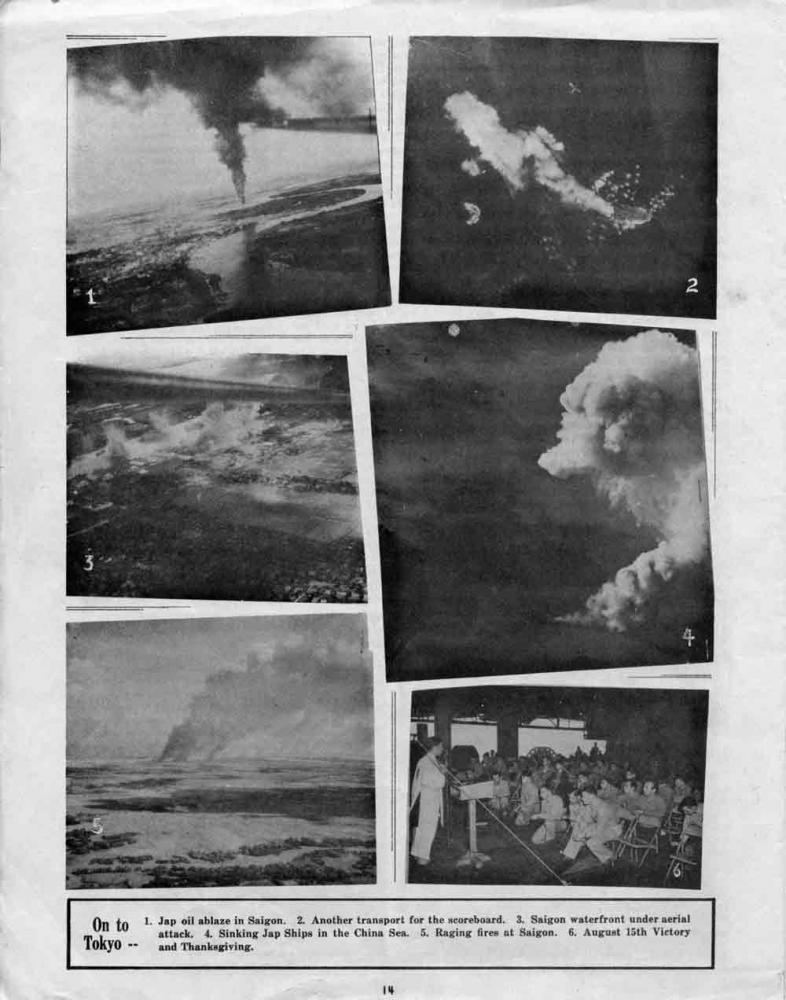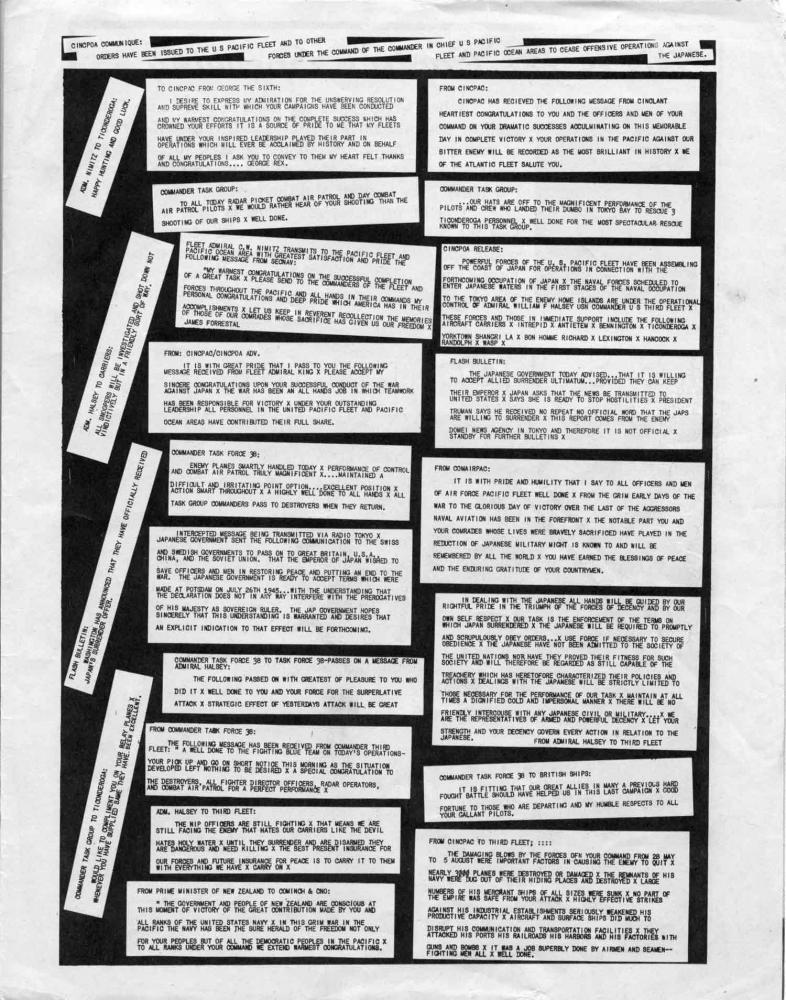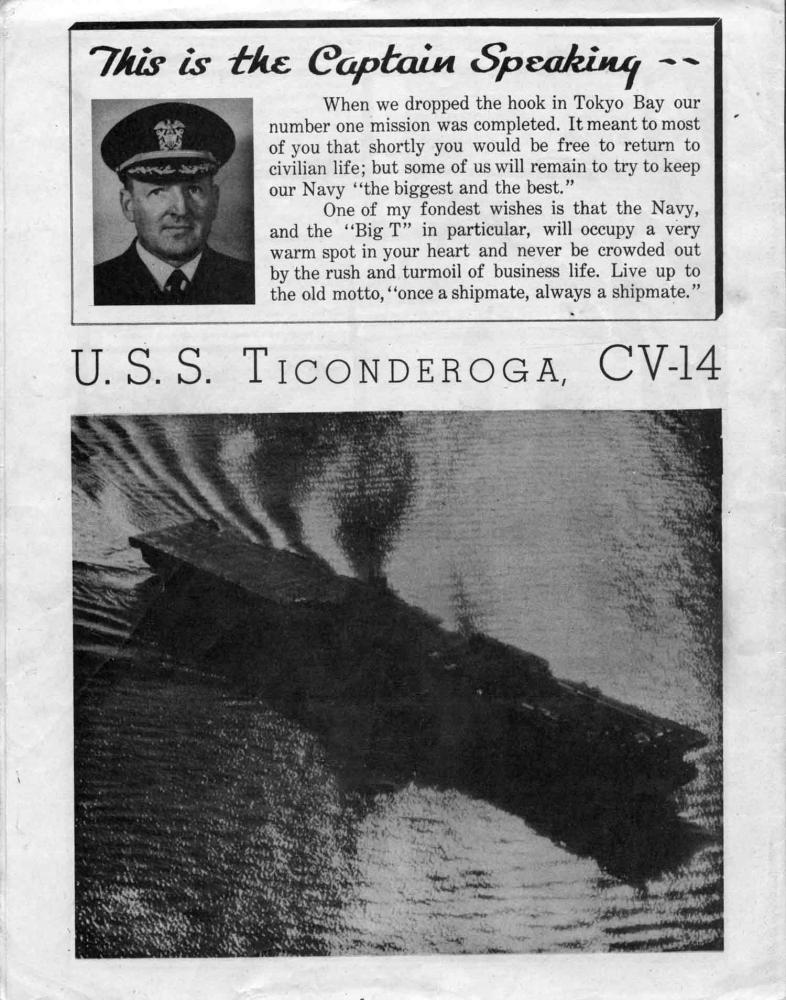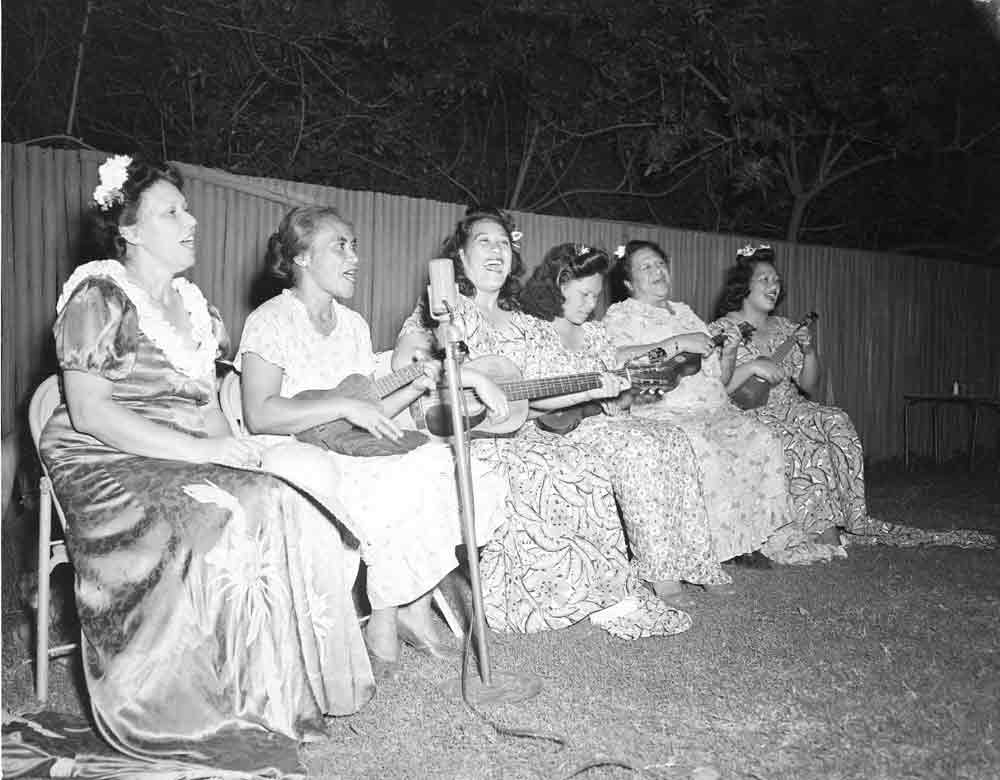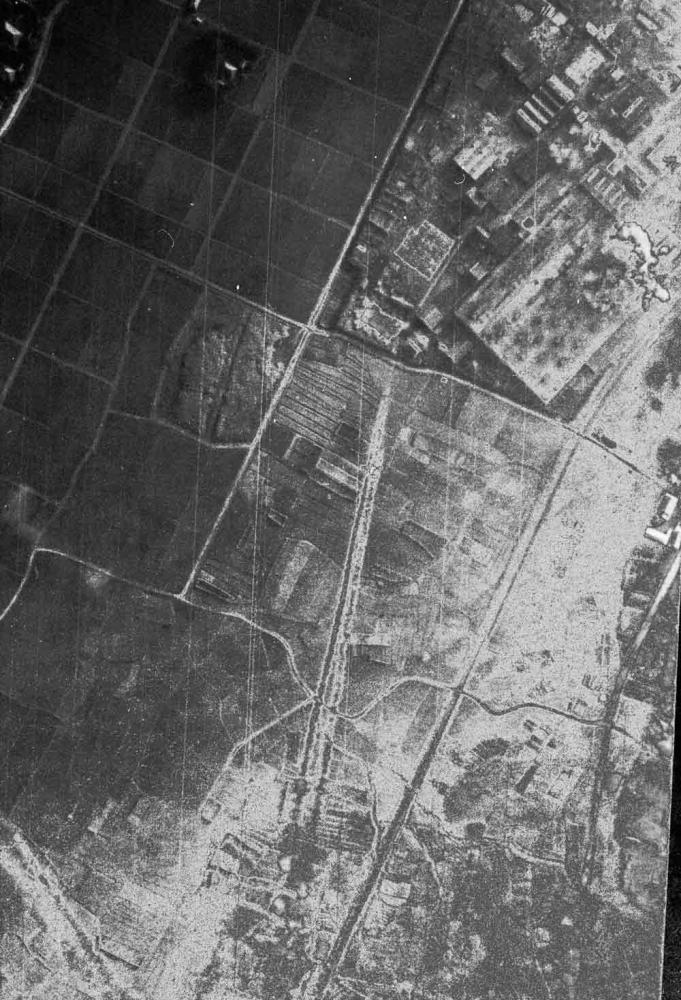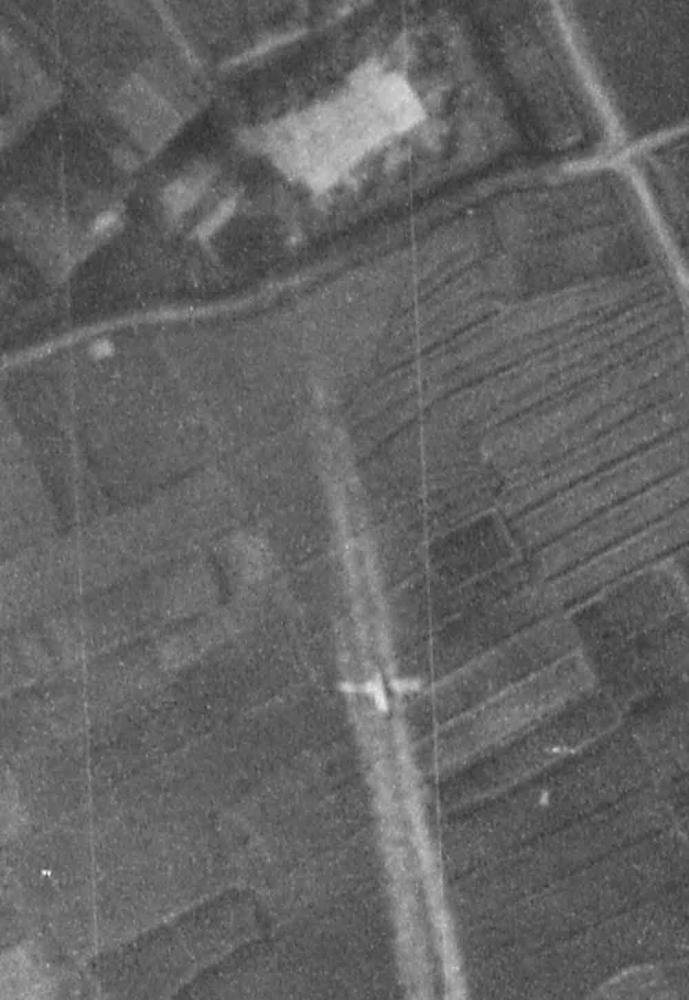"Oh, it's a long, long while,
from May to December;But the days grow short
When you reach September."
In history books and America's memory, Dec. 7, 1941, lives "in infamy." Aug. 14, 1945, while equally significant, does not convey the same historical resonance.
Yet for Keith E. Montague, former Navy pilot and now a retired Salt Lake executive in graphic arts and advertising, the mid-August calendar continues to yield memories of a footnote in history, nearly a half-century old, that will not die.
Those recollections, indelible and poignant, are still part of an enduring bond between former comrades-in-arms, and are shared with Montague across time and distance by three other ex-pilots from Navy's Air Group 87, of which VBF-87 was a bombing-fighting squadron in World War II.
In 1945, Japan had been mortally wounded Aug. 6 and 8 when America unleashed its atomic destruction at Hiroshima and Nagasaki. But the war did not end on those cataclysmic notes. It dragged on while the Japanese considered the Allies' surrender terms. American forces continued daily raids against still-hostile air and naval forces. Montague, a Navy lieutenant, and his four-plane division of F6F Hellcat fighter-bombers were part of that effort. Their raids on the Japanese homeland often took them within miles of Hiroshima's charred remains.
In the pre-dawn darkness of Aug. 15, Montague's "Ginger" division rose from the deck of the aircraft carrier USS Ticonderoga, positioned off the island of Honshu, and turned for Japan on a routine but deadly mission. When clouds obscured their primary target on the Chiba penisula east of Tokyo, Montague led his Hellcats in a rocket-and-bomb attack on Choshi airfield. Just as they were pulling out of their dives at 6:35 a.m., an order from the "Big T" crackled over the radio:
"Return to base. Bring your bombs with you." There was no explanation, although the fliers suspected the reason.
When Montague and his comrades landed aboard the carrier, the ship's crewmen were excitedly lining the flight deck to watch them come in. The Japanese had quit, they were told with jubilation. At long last, the war in the Pacific was over.
In dropping the final bombs of World War II, Montague and his fellow fliers placed their personal punctuation mark at the close of the world's momentous clash of arms.
Today, Montague, commonly known as "Monty," still reflects on the significance of that long-ago moment when its anniversary rolls around. "I don't dwell on it," he says, "but I do remember the feeling of relief and happiness in knowing the war was over. There was sadness, too. We lost some wonderful squadron mates in those final days."
Especially painful to him was the death of the VBF-87's skipper on July 24 in action over Japan's Inland Sea. Also, two other comrades, division leaders like Montague, were shot down and lost the day after the Nagasaki A-bomb strike.
In Elkington, Md., John W. "Wally" McNabb has his own memories. He flew the last plane in the attack formation and is credited as having dropped the last bomb of WWII from a carrier-based plane.
"I really didn't believe (the war was over) when we landed on the Big T," says McNabb. "We'd heard that before, and once we'd celebrated all night long."
When the Ticonderoga returned to the states in October and docked in Tacoma, Wash., Mc-Nabb was as a celebrity of sorts. "They sent a reporter - a woman in slacks! - to interview me, but I wasn't aboard at the time," he relates. "I understand three or four guys went down to meet her, claiming they were me. I never did see her."
McNabb served in the Navy for 20 years before becoming chief instructor for flight safety with IBM. "Remembering how short life was for our buddies, I think I'm the luckiest one just to be alive after 41 years of worldwide flying," he says.
In Lewiston, Idaho, W.E. "Johnny" Johnson, another VBF-87 veteran, also remembers - for somewhat different reasons. He was scheduled to fly on that fateful morning, but the cease-fire came before he got off the deck.
His memories, however, are in some ways even more piercing. They revolve around a little-known story about the Hiroshima A-bomb attack: the death of perhaps a dozen or more American airmen who were captives of the Japanese in Hiroshima at the time of the detonation. One of them, 18-year-old Norman R. Brissette from Massachusetts, had been Johnson's gunner when they were flying months earlier in a two-seat SB2C dive bomber.
Johnson, former roommate of Monty's aboard the "Big T," is now a retired journalist who has previously written of his recollections: "I celebrate (Aug. 15) every year, faithfully. But not because of the war. It's the wedding anniversary for Pat and me.
"Also, Pat's birthday is Aug. 8, and that's the date the second atomic bomb was dropped." (The date is also often recorded as Aug. 9, presumably because of international dateline differences.)
Johnson has also written about airman Brissette. "He was fresh out of boot camp when I took him for his first-ever plane ride. When I was transferred to fly Hellcats, Brissette ended up with a Hell-diver pilot named Ray Porter."
According to several accounts ("Day of the Bomb" by award-winning author and newsman Dan Kurz-man, and Peter Wyden's "Day One," later the basis for a television movie of the same name that aired in June), Porter and Brissette were shot down July 28. Brissette ended up a prisoner in Hiroshima along with the crews of a B-29 called "Lucky Lady" and a B-24 dubbed "Lonesome Lady."
In his book, Kurzman wrote that Brissette and another American, Staff Sgt. Ralph J. Neal, survived the Hiroshima A-blast by jumping into a cesspool but later died, painfully and horribly, of radiation poisoning.
(A footnote in Wyden's book says Brissette and Neal "were the only known immediate survivors among 23 American aviators held prisoner at three locations in downtown Hiroshima at the time of the bombing.")
Johnson, in one of his personal accounts, wrote: "For more than three decades, it was denied that any American lives were lost in the bombing of Hiroshima and Nagasaki. Then the Freedom of Information Act was passed and details became available. Stories and books began to appear and I finally learned the truth."
In Pocatello, Idaho, George D. Wood is a fourth member of VBF-87 who was a photo-reconnaisance specialist. Wood was also on the Aug. 15 war-ending mission, but flying far above Montague's Ginger division, snapping pictures of the action (the squadron scrapbook contains one of the photos).
Wood had been recommended for a Distinguished Flying Cross. But even though photo flights were not supposed to engage in combat action, he had twice ignored orders by firing on targets of opportunity. His plane was hit in the second attack and he limped home, only to face the wrath of his commander - who tore up the order for Wood's medal.
Years later, Wood was examining his squadron records in Washington, D.C., and found a copy of the still-valid order for the DFC tucked into his file. When his daughter heard about it, she and other family members began to contact legislators and Navy officials - unbeknown to Woods - to get the medal awarded to her father.
In April 1993, at a surprise ceremony in Pocatello attended by his family, city officials and ex-squadron mates Montague and Johnson, Wood officially received his DFC - 47 years "late" but with appropriate honors.
After the war when the squadron was disbanded, Montague designed and illustrated a historical scrapbook of VBF-87 called "Another Light, Please," and copies were sent to each member. (Monty, who shot down a Japanese kamikaze plane in action over Okinawa in July 1945, also wrote a longhand account of his Navy experiences in a personal journal, illustrated in color with his own sketches. Big T aircraft technicians "bound" the book in a cover of Plexiglas, the material used for Hellcat cockpit canopies.)
In recent years the wartime comrades, now well into their 70s, have gathered three times - in Seattle, at McLean, Va., and this past June in Pensacola, Fla. - to reclaim the kinship that only the shared experience of combat nurtures. In preparation for the first reunion in 1988, Montague also gathered photos and biographies from each squadron member for a second publication titled "September Song," the squadron's adopted theme song since the lyrics seemed to fit VBF-87's projected tour of duty in 1945. The Ticonderoga sailed from Hawaii in May and was due to stay on station until December.
In the foreword of "September Song," Johnson wrote: "For VBF-87 the days of combat duty grew short with the first atomic bomb, and they ended with the signing of the peace treaty on Sept. 2, 1945, in Tokyo Bay. That was 43 years ago (at the time of this writing in 1988). For us the autumn weather has turned the leaves to flame and we have reached the September of our lives. We now are in `those golden days' when we look back at the greatest adventure of our lives - and the great and enduring friendships that grew out of it.
"This is our September Song - a celebration of life land friendship in those golden days we were promised so long ago."
Each time there's a reunion the squadron's ranks are a bit thinner. But the personal bonds remain, undiminished by distance. Once summoned up, Monty's memories are still remarkably poignant, as are those of his fellow fliers from '45. After all, they had a hand in history.


